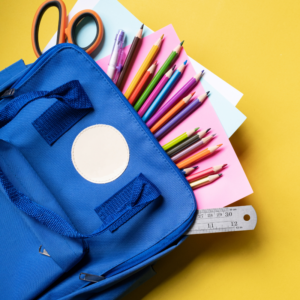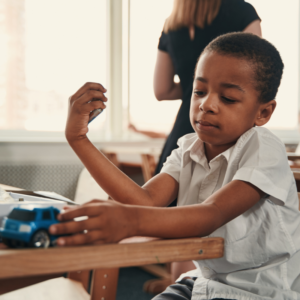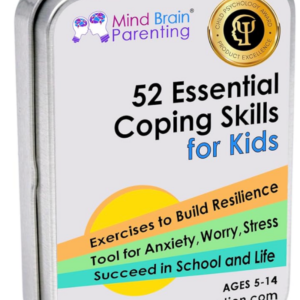As we approach the back to school season, one of the most effective strategies to help your child transition smoothly is to establish consistent routines. If you have a child with special needs, this becomes even more pivotal, as children thrive in structured environments. Having a routine can help them feel secure and prepared for the daily transitions that school brings.
Creating rituals for the morning and evening makes a world of difference. Start by devising a schedule that incorporates both familiar tasks and some fun elements. For example, maybe your morning routine can include a short dance-off to their favorite song before breakfast. Establishing a predictable flow can even alleviate potential anxiety about what’s next in their day.
Have you ever noticed how your child seems to come alive once they know what to expect? When routines are clear, kids can focus on the day’s adventures instead of worrying about the unknown. This structured approach helps them to efficiently transition into school mode, leading to a more positive start to their day.

Transitioning to an earlier bedtime can feel daunting, but starting a few weeks before school begins can ease the process. Consider adjusting their bedtime by 10-15 minutes each night. This gradual shift allows their bodies to acclimate to a new routine without feeling rushed or overwhelmed. You can even tag along and adjust your bedtime to mirror theirs! It becomes a shared experience, which can be comforting for your child.
To help reinforce this new schedule, why not create a visual bedtime chart together? A colorful chart hung in their room can not only serve as a visual reminder of bedtime but also cultivate a sense of responsibility in your child. Plus, it’s a fun activity to do together and brings a sense of ownership and accomplishment.

A great way to foster consistency is to involve your child in the creation of the daily routine. Use visual charts that you can both decorate together. Allowing your child to choose some activities or tasks encourages them to feel valued and that their preferences are respected.
For instance, consider sitting down with them and brainstorming what they would like to do during the winding down period before bedtime. Do they want to read a book, practice a hobby, or maybe engage in a calming activity like drawing? Letting them choose can make the routine feel more personalized and less like a checklist they have to follow. Remember, the goal is not to impose a rigid structure but to nurture a comforting sense of predictability.
"A predictable routine can turn chaos into confidence, especially for special needs children." - Child Development Expert
Research consistently shows that having a well-defined routine can reduce anxiety levels in children, particularly those with special needs. The predictability of a routine can help kids navigate the sometimes overwhelming landscape of daily life. In moments of anxiety, a scheduled activity can serve as an anchor, reminding them that they have a place in the world where things follow a comfortable rhythm.
If you find that anxiety still sneaks in, discussing the timings and tasks involved in your routine can be beneficial. Sharing your expectations clearly can help demystify what’s ahead, making the experience less daunting for your child.
Establishing routines may require effort initially, but the benefits are profound. Not only do they create a comforting environment for children, but they also enhance their ability to adapt to change. Whether you’re preparing your child for back-to-school or simply seeking to instill a sense of order in daily life, the power of routine is a tool that can lead the way towards thriving emotional well-being.

As the back-to-school season approaches, it's essential to ensure that you and your child are not just ready but excited for the new school year. Have you thought about how crucial the right school supplies are for a smooth transition? It’s more than just pens and papers—having the right tools can transform the hectic first days into a seamless experience. Let’s dive into some practical strategies to help you prepare effectively!
The first step in your journey towards preparedness is creating a personalized checklist. Think about your child's specific needs. Does your child enjoy art? Are they particularly interested in science? Tailor the list to reflect their interests and requirements. You can start by sitting down together and discussing what they think they’ll need. This approach not only acknowledges their preferences but also keeps them engaged in the process.
"Preparation is the key to unlocking a child's potential, especially for those who learn differently." - Educational Specialist
When constructing this checklist, consider including some unexpected items that might excite your child—colorful notebooks, funky erasers, or even a themed backpack. The creativity involved in preparing the checklist can make school supply shopping an enjoyable experience.

Now that you have the supplies, it's time to organize them. But this doesn’t have to be a chore; it can be a fun activity! Involve your child in the organizing process. Set up a little station at home where you can sort through everything together. Perhaps play a game while you’re at it, where you both race to see who can stack the pencils the fastest. Adding a fun twist will foster a sense of ownership over their materials.
Encourage your child to decide where certain items should go. If they want their markers on the top shelf for easy reach, let them go for it! This autonomy promotes a sense of responsibility and independence that can be very beneficial. Plus, when your child feels in charge of their own supplies, they’re likely to take good care of them, reducing the amount of lost items throughout the school year.
Imagine the first chaotic morning of school—everyone's rushing around, and supplies seem to be misplaced. To mitigate that stress, you should label everything! This small act can make a significant difference. Use colorful labels or even let your child decorate them. Write out their name on every item, from notebooks to lunch boxes. It will not only help them find their supplies easily but also fosters a sense of belonging.
Labeling can be a simple yet effective way to help children—especially those with special needs—navigate their belongings confidently. When they can identify their supplies, the cluttered environment transforms into a more organized and focused space.
Did you know that nearly 35% of special needs children lack adequate resources for school supplies each year? By preparing appropriately with tailored supplies and involving your child in the organization, you are not just equipping them academically; you're also laying down a foundation for self-sufficiency and confidence.
In a time when everyone is swamped with to-do lists, having a streamlined supply setup can alleviate last-minute stress and confusion. The freedom expressed through personalized organization allows for smoother transitions and enhances the learning experience.
Preparing your child for school isn’t just about gathering items; it’s about nurturing a mindset of independence and enthusiasm. When you combine a personalized checklist with collaborative organization and thoughtful labeling, you’re setting the stage for a fantastic school year ahead. So grab those colorful markers, jump into the organizing frenzy with your child, and let the excitement of learning blossom! Looking forward to the splash of creativity your preparations will bring!
As the school year approaches, feelings of excitement can quickly morph into anxiety, especially for children who may already face unique emotional challenges. With these changes looming, cultivating emotional readiness in your child is vital. By fostering open conversations, sharing personal experiences, and introducing helpful emotional support tools, you can create a strong foundation for a successful school transition.
Discussing school expectations openly with your child is one of the most significant steps you can take. Children absorb the emotions and perceptions of their parents, so ensuring they feel comfortable discussing their concerns will go a long way. Ask them about their thoughts on returning to school—what excites them? What are their worries? Establishing a dialogue can ease their anxiety.
Studies indicate that open communication significantly reduces anxiety in children, making it essential for parents to engage proactively in discussions. Keeping a consistent line of communication open not only eases worries but reinforces their importance within your family’s dynamic. As one parenting coach insightfully said,
“The greatest tool you can give your child is the freedom to express their emotions.”

While it may feel like your days as a student are long behind you, sharing your own school experiences can help to bridge the emotional divide between you and your child. It’s not just about relaying stories, but rather about connecting on a deeper level. You might say:
“When I was in your shoes, I was nervous too! I remember feeling overwhelmed on the first day of school.”
This connection normalizes their feelings and reaffirms that they're not alone during this significant transition. By engaging them in stories, not only do you normalize these emotions, but you also provide coping strategies that worked for you. You might mention how you dealt with a challenging subject, how you made friends, or the strategies that helped you adjust to new routines. Life lessons shared in a warm, relatable manner can be incredibly impactful.
Another excellent way to help your child manage anxiety is through tangible tools designed for emotional support. Have you ever considered introducing affirmation coloring books into their routine? These engaging activities not only provide a creative outlet but also help soothe anxiety. During stressful moments, what’s better than coloring while repeatedly affirming, “I am calm,” or “I can handle whatever comes my way?”
Here are a few benefits of using affirmation coloring books:
Inclusive creative tools can make a significant difference. So keep a steady supply of pencils and inspire their artistic side while reinforcing messages of empowerment.

The back-to-school season is a time of growth and transformation, filled with both challenges and opportunities. By engaging in open discussions, sharing your experiences, and incorporating supportive tools like affirmation coloring books, you will aid in nurturing your child’s emotional strength. Remember, addressing their concerns not only prepares them for school but also strengthens the bonds within your relationship—the two of you can face the school year together with confidence.
As the new academic year approaches, it’s essential to remember that your involvement and understanding can illuminate their path, helping them transition smoothly while embracing every new experience that comes their way.
When it comes to navigating your child's education, the importance of effective communication with teachers cannot be overstated. Establishing a strong relationship with educators is not just a nice-to-have; it's essential for fostering a conducive learning environment. You might wonder where to start. Don’t worry; we've got you covered with practical tips to enhance your communication with teachers!
One of the best ways to lay the groundwork for a successful school year is by scheduling an introductory meeting with your child's teacher. This meeting sets the tone for your partnership and opens up lines of communication that will benefit both you and your child.
Think of this meeting as a bridge-building exercise! The more your child’s teacher knows about their unique circumstances, the better equipped they will be to provide tailored support.
To keep your interactions organized and focused, consider utilizing effective communication templates. Often, communication with teachers can feel overwhelming, especially if you have multiple updates to share or concerns to address.
Ultimately, good communication is about mutual understanding. Teachers benefit from knowing exactly where you stand, and you can keep tabs on your child’s progress with ease!

View your relationship with educators as a partnership rather than a one-way street. Teachers are incredible sources of insight when it comes to your child's development and can provide feedback that you might not see at home.
Remember, “Teachers who truly know their students are better equipped to meet those students' needs,” as stated by an education advocate. Your active participation can make a world of difference.
Effective communication opens doors to a more supportive learning environment, significantly enhancing your child’s educational experience. By setting the stage with introductory meetings, keeping communication organized with templates, and forging a strong partnership with teachers, you'll contribute to a positive academic journey for your child.
In this back-to-school season, let your proactive approach to communication set a positive tone. After all, the more involved you are, the greater the impact you can have on your child's education. So take that step and start building those bridges today!
As the new school year approaches, the excitement of fresh beginnings can be palpable. However, it can also serve as a reminder to provide your child with the tools they need for success. One effective way to ensure academic growth is by setting clear milestones—and that journey starts with reflection and creativity.
First and foremost, consider conducting a review of the previous school year. This isn’t just about going through grades and reports; it’s about understanding where your child excelled and where they might have struggled. What subjects sparked their interest? Were there concepts that left them puzzled? By identifying these areas, you can tailor your goals to help bridge any learning gaps and rekindle their curiosity.

Engaging in fun learning activities can transform the way your child views their education. Who said learning has to be a chore? Take a trip to the local museum or conduct a DIY science experiment at home. These experiences create lasting memories and allow you to bond through shared laughter and discovery. When you mix play with learning, it increases their enthusiasm and encourages them to tackle challenges willingly.
To help maintain focus on these academic goals, creating a visual goal tracking system can be a game changer. Consider collaborating with your child to design a colorful chart on a poster or digital platform. Visual cues not only empower children by making their progress tangible but also instill a sense of ownership in their learning journey. Perhaps include stickers or markers that they can add whenever they achieve a milestone. As they see their accomplishments accumulate, it encourages persistence and motivates them to keep pushing toward their next goal.
"Learning should be as joyful as it is educational." - Educational Psychologist
And don’t forget the importance of regular progress reviews! These not only act as an encouragement booster but can lead to improved academic outcomes. Watching your child thrive academically doesn’t just happen—it’s cultivated. By making it a point to sit down regularly and discuss their achievements, challenges, and strategies, you nurture an open line of communication that’s essential for their growth.
To sum it up, setting milestones in your child’s educational journey doesn’t have to be a daunting task. Instead, embrace it as an opportunity to foster an atmosphere of excitement, positivity, and involvement. By reviewing past performances, engaging in enjoyable activities, and creating a system for tracking progress, you set the stage for a fruitful school year.
Remember, these strategies not only bolster academic readiness but also pave the way for a journey filled with discovery and growth. So as you prepare for this new chapter, think about how you can make learning a delightful and enriching experience for your child.
In conclusion, setting these academic goals and expectations can significantly boost your child's confidence and performance. So, what are you waiting for? Let the adventure of learning unfold!
To learn more about sleeping tips check our " 4 Effective Ways to get Your Kids to Sleep"
TL;DR: To foster academic growth, review past work, engage in fun learning activities, and create a visual goal tracker with your child. Regularly assess progress for improved outcomes and aim for a joyful learning environment.
Real Estate I like the efforts you have put in this, regards for all the great content.
Hello my loved one I want to say that this post is amazing great written and include almost all significant infos I would like to look extra posts like this
Clochant I do not even understand how I ended up here, but I assumed this publish used to be great
Mountsinai Pretty! This has been a really wonderful post. Many thanks for providing these details.